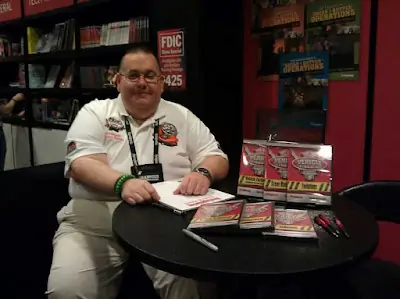In 2024, the emergency services community lost one of its most steadfast pillars and thought leaders: David Dalrymple, a revered New Jersey-based instructor, writer, and responder whose profound contributions to fire and emergency medical services (EMS) reverberated across the United States and beyond. Dalrymple, who spent more than four decades immersed in both the theory and the hands-on realities of rescue work, left behind not just a distinguished professional record but an enduring legacy that continues to shape the contours of modern extrication tactics and emergency response protocols. His death marked not merely the passing of an individual but the close of a monumental chapter in the evolution of rescue operations in an increasingly complex and technology-driven world.
From his early roots in New Jersey to his international impact as a trainer and technical expert, David Dalrymple was more than a practitioner; he was a teacher, a visionary, and a bridge between traditional rescue approaches and the intricate demands of 21st-century vehicle technology. His commitment to emergency service was deeply personal and tirelessly professional, manifesting in countless roles—from a career EMS provider at Robert Wood Johnson University Hospital in New Brunswick to a dedicated volunteer firefighter, EMT, and rescue technician at Clinton EMS/Rescue in Clinton, New Jersey. Every position he held was not just a job but a vocation, a calling to serve and to elevate those who serve.
Dalrymple’s expertise in vehicle extrication and transportation rescue was both rare and urgently needed. As the automotive industry evolved rapidly—introducing hybrid drivetrains, electric vehicles, and increasingly rigid structural designs—so too did the challenges faced by first responders. Dalrymple responded not only by staying ahead of these changes but by helping to write the very playbook for how emergency professionals could adapt. As the executive educator of RoadwayRescue LLC, he crafted comprehensive training programs that prioritized operational safety, situational adaptability, and tactical efficiency. These core principles were not just theoretical ideals—they were life-saving strategies implemented by thousands of emergency personnel in real-world scenarios.
It was through RoadwayRescue LLC that Dalrymple reached the front lines of the fire service and EMS communities. His teachings emphasized that every vehicle crash was more than a mechanical problem; it was a human emergency requiring quick, informed, and decisive action. He equipped responders with tools of knowledge as much as tools of trade, preparing them for the high-stakes environments where timing, precision, and confidence often spelled the difference between life and death.
Beyond his role as an educator at RoadwayRescue LLC, Dalrymple held a vital position as the education chair for the Transportation Emergency Rescue Committee–US (TERC–US), an organization dedicated to advancing extrication standards across the nation. In this capacity, Dalrymple was instrumental in codifying best practices and promoting uniformity in training methodologies. Through his leadership, TERC–US became a central node in the network of American emergency response education, aligning its standards with both technological trends and field-tested operational wisdom.
Dalrymple’s influence, however, was never confined by geography. He was as comfortable in an international symposium hall as he was on the roadside of a multi-vehicle accident. His stature as an international assessor and educator placed him in training arenas and competitions across North America, Europe, the United Kingdom, and South Africa. Through his involvement with the International Extrication Challenge and the World Rescue Challenge, he contributed to a global dialogue on rescue innovation and professional development. These international forums were not mere exhibitions but vital testing grounds for best practices. Dalrymple ensured that they were also venues of mutual learning, fostering camaraderie and the cross-pollination of knowledge between nations.
One of Dalrymple’s most celebrated achievements came in 2007 when he was honored with the prestigious Harvey Grant award. Named after another iconic figure in EMS education, the award is given to individuals who exemplify a deep and enduring commitment to emergency medical instruction and advancement. In receiving it, Dalrymple was recognized not just for his teaching acumen but for his transformative effect on the field. The award symbolized peer recognition of what thousands of responders already knew: that David Dalrymple was a foundational architect in the modern emergency response landscape.
His technical expertise also brought him to the cutting edge of automotive engineering safety, where he served on the Society of Automotive Engineers (SAE) task force focused on hybrid and electric vehicle responder safety. This collaboration placed him in a rare and essential intersection of public safety and industrial design. As vehicle manufacturers began prioritizing energy efficiency and structural reinforcement, new dangers emerged for responders—such as high-voltage components and reinforced battery housings. Dalrymple’s input helped translate the specialized language of automotive design into practical, actionable guidance for responders who needed to navigate these complexities under intense pressure and within seconds.
In addition to his practical and strategic contributions, Dalrymple distinguished himself as a prolific writer and communicator. For readers of Fire Engineering magazine, his “Extrication Tactics” column became a vital source of insight, offering deep dives into methodologies, challenges, and evolving tools of the trade. These articles were widely circulated, cited, and implemented in training drills and firehouse discussions across the nation. His voice in these pages wasn’t merely instructive—it was empowering. It encouraged critical thinking, challenged outdated approaches, and validated the evolving experiences of responders in the field.
Dalrymple’s authorship extended to the seminal 2009 edition of Fire Engineering’s Handbook for Firefighter I and II, where he contributed the definitive chapter on vehicle extrication. This chapter, embedded in a textbook used to train thousands of new firefighters, ensured that his teachings would reach future generations, forming the basis of curriculum in fire academies and EMS classrooms alike. His careful blend of clarity, precision, and field relevance made the material accessible yet robust, theoretical yet imminently practical.
What made Dalrymple’s contributions especially profound was the seamless alignment between his technical knowledge and his compassionate ethos. Colleagues often remarked on his deep empathy—not only for the victims trapped in vehicles but also for the responders tasked with rescuing them. He understood the psychological and emotional toll of emergency work, and he believed that the antidote to fear or hesitation was education and preparation. His instruction carried a consistent message: knowledge saves lives, and training builds the courage to act decisively.
This compassionate approach became even more critical as vehicle extrication became increasingly complex. The rise of hybrid and electric vehicles, reinforced passenger cabins, and exotic materials meant that traditional “cut-and-remove” methods were no longer sufficient. Dalrymple emphasized situational awareness, real-time decision-making, and pre-incident planning. He spoke often about the importance of understanding a vehicle’s anatomy—how it was built, where the danger zones lay, and how to disable power sources safely. He taught that a rescuer’s first responsibility was to protect themselves and their team so they could, in turn, protect others.
Through his career, Dalrymple witnessed firsthand the transformations in the emergency services landscape. From analog radio systems to digital command centers, from gasoline engines to lithium-ion batteries, from static extrication tools to dynamic, modular systems—he adapted, taught, and evolved. He was not content to be a passive observer of these changes; he sought to master them and translate them into wisdom for others.
Even in his final years, Dalrymple remained active in mentoring and professional development. He participated in workshops, webinars, and conferences, sharing his insights with both seasoned professionals and newcomers alike. His presence was always marked by humility and generosity, never by ego. He viewed every engagement as a two-way exchange—an opportunity to learn as much as to teach.
The outpouring of grief following his death in 2024 reflected the breadth and depth of his impact. Testimonials poured in from firefighters, paramedics, rescue technicians, instructors, and students. Many shared stories of how Dalrymple’s teachings had guided them through real-life rescues, how his articles had shaped their thinking, or how his quiet encouragement had given them the confidence to lead. His legacy, they agreed, would live on not in monuments but in moments—moments of courage, skill, and clarity forged in the crucible of emergency response.
David Dalrymple’s life and work also served as a reminder of the often-overlooked complexity of emergency services. The men and women who respond to car crashes, industrial accidents, and natural disasters must navigate rapidly evolving situations with limited information and high stakes. Dalrymple dedicated his life to making sure they did not do so unprepared. He brought structure to chaos, clarity to confusion, and hope to those on both ends of a crisis.
His legacy is now carried forward in the thousands of rescue technicians and EMTs who absorbed his teachings, in the standardized protocols he helped establish, and in the international networks of collaboration he championed. His death is a loss that resonates deeply within a field that rarely pauses to mourn—yet in this case, it must. Because what David Dalrymple gave to emergency services was not simply technical expertise but a vision of excellence grounded in humanity.
He leaves behind more than a curriculum or a set of tools. He leaves behind a culture of diligence, of constant learning, of unwavering commitment to saving lives. His was a life defined not by accolades, though they were many, but by impact—the kind of impact that is felt at 3 a.m. on a rain-slicked highway, when a rescue technician remembers the training, recalls the technique, and saves a life because someone once taught them how.
David Dalrymple’s name will forever be etched into the history of emergency services. His work changed how we rescue, how we teach, and how we prepare. And though he is gone, the ethos he championed continues to guide us: that knowledge is power, safety is paramount, and the most enduring legacy is one built on service.


Leave a Reply